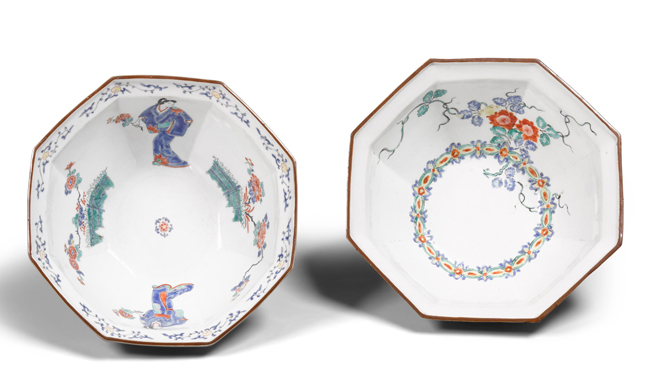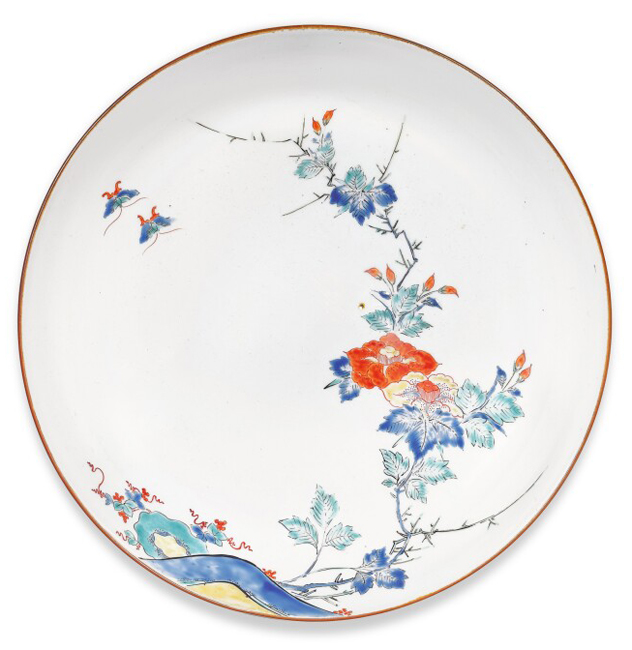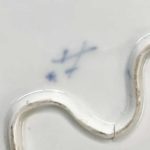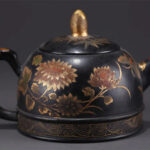Kakiemon is a style of Japanese porcelain, with overglaze decoration called “enameled” ceramics. It was originally produced at the factories around Arita, in Japan’s Hizen province.
The style was quickly copied by the new European porcelain factories that appeared in the 18th century, such as Meissen in Germany, Chantilly in France and Chelsea in England. The Chinese also began to copy the style for Chinese export porcelain. By about 1760 it had largely fallen from fashion in Europe. Reference: Wikipedia
Below are some examples and price guides of Kakiemon antiques which have butterflies as part of their design including an octagonal bowl.

Two octagonal porcelain bowls
Hizen ware, Kakiemon type
Edo period (1615-1868), 18th century
Each painted in red, yellow, blue, green, and black enamels with a chocolate-brown rim, the first decorated on the interior with two Kanbun beauties holding sprays of flowers and blossoming peonies and chrysanthemums behind a brush fence, the exterior a squirrel on grape vines on a bamboo trellis and butterflies above flowers and rocks, the second decorated on the interior with flowering vines rising from a band of linked blossoms encircling the cavetto, the exterior with scattered cherry blossoms
8 1/2in (21.6cm); 8 3/8in (21.2cm) diameter
Sold for Sold for US$2,167.50 inc. premium at Bonham’s in 2021

Japanese Arita Kakiemon octagonal porcelain serving bowl. Deep bowl with flaring mouth-rim, Inside decorated with butterflies, Ho Ho bird, cloud and moon, flowers and leaves. The center is decorated with flowers surrounded by a doubled octagon. The mouth-rim has a cage-au lait enameling and next to that a band of flowers. The outside, flowers and bamboo trellis. Made by the Kakiemon Kilns. ca. 1725, 4 1/4″H x 8 3/4″diam
Sold for US$375 at Ripley Auctions in 2021



